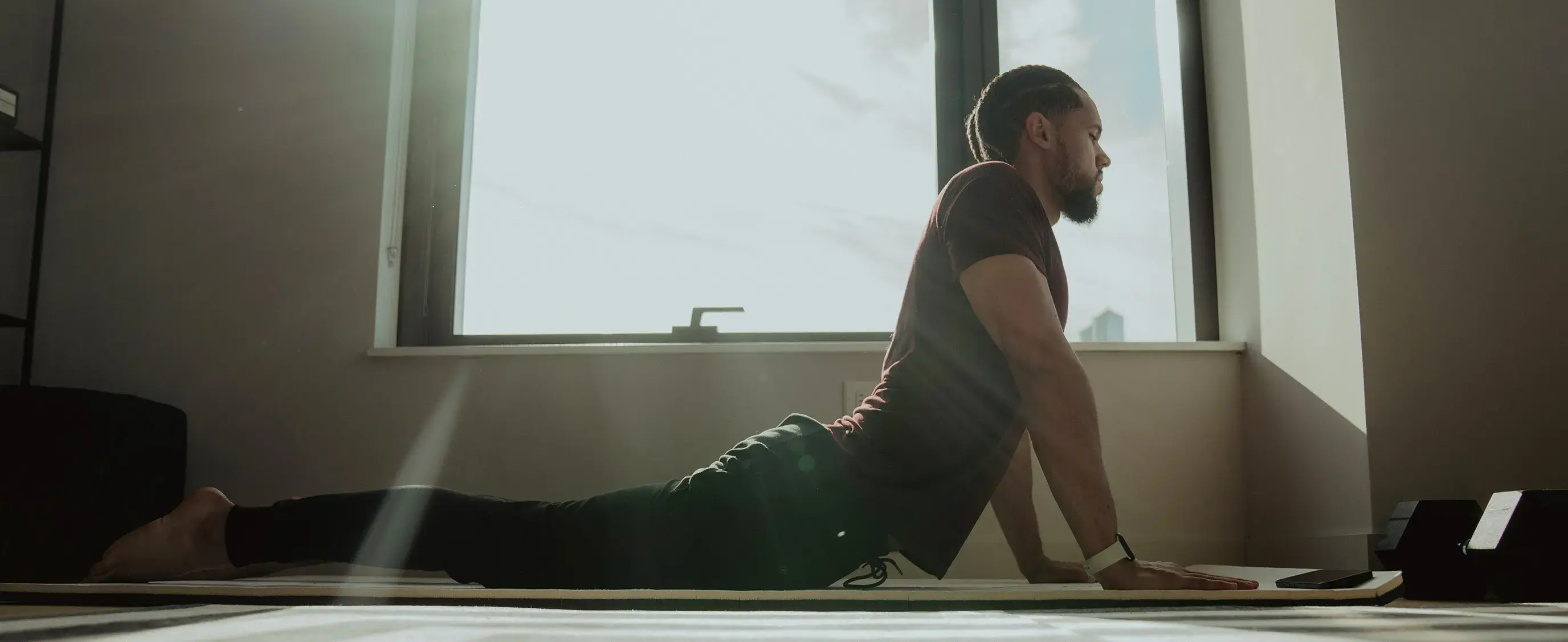After a big competition or intense training cycle, it can be hard to get back into the swing of things. You might feel sore or exhausted, and jumping back into your routine can be daunting. Active recovery workouts can help you ease back into training by gently stimulating your muscles and reminding your body how to move. In addition to these workouts, incorporating some of the best recovery tools for athletes—like foam rollers, massage guns, and compression gear—can further support your body’s healing process. In this article, we'll explore the ins and outs of active recovery workouts, including what they are, the benefits they can offer, and some examples of routines to get you started. You’re in the right place if you want to stay active while recovering from soreness or burnout.
Pliability's mobility app makes incorporating active recovery workouts into your routine to achieve your recovery goals easy. The app provides targeted routines that will keep you moving while you heal, so you can feel good and get back to training consistently.
What is an Active Recovery Workout?

Active recovery workouts are low-intensity exercises after intense training to aid:
- Muscle repair
- Reduce soreness
- Improve circulation
These sessions can include activities like:
- Walking
- Swimming
- Cycling
While intense workouts provide an endorphin rush, daily high-intensity training without proper recovery can lead to injury. Active and passive recovery (like sleep or relaxation) ensure your body can heal and maintain performance. While passive recovery focuses on complete rest, active recovery involves gentle movement, offering an efficient way to accelerate recovery without compromising training goals.
“Complete rest aids recovery, but a more active approach can speed up the process and help maintain consistent training,” says Peloton instructor Matt Wilpers.
Why Active Recovery Works
Small tears in muscle fibers occur during exercise, leading to soreness and stiffness. This is a natural part of building strength, but excessive soreness can hinder training and performance. Active recovery workouts help alleviate discomfort from post-workout soreness, allowing you to continue training.
Here are three key benefits of active recovery:
1. Improved Blood Circulation
Matt points out that gentle movement keeps your blood flowing more than complete rest. Blood flow delivers oxygen and nutrients throughout the body, and other waste products are removed, which helps muscles to recover faster.
2. Reducing Post-Workout Stiffness
Do an intense workout, spend the rest of the day plopped on the couch, and then find it hard even to walk the next day? Matt says that active recovery can help reduce that post-workout stiffness and soreness.
3. Accelerated Recovery
Scientific research shows active recovery can help you recover from an intense workout faster than passive recovery alone.
Related Reading
- What Is Active Recovery
- Why Is Recovery Important for Athletes
- Is Yoga Active Recovery
- Should You Be Sore After Every Workout
- Calves Sore After Running
- Which Muscles Recover the Fastest
- Why Are Ice Baths Good for Muscle Recovery
- What to Do on Recovery Days
- Why Is It Important to Include Recovery Time in a Workout Program?
- What to Drink for Muscle Recovery
11 Active Recovery Workout Examples

1. 30-Minute Cardio-Based Active Recovery Workout
This workout gets your heart pumping without putting too much stress on your muscles and joints. You can perform it indoors on a:
- Bike
- Rowing machine
- Elliptical
- Swimming
Or, enjoy the great outdoors and walk or jog in nature.
How to:
Five minutes:
- Warm-up
- Start slow
- Find your pace
Twenty minutes:
- Maintain a steady pace that increases your heart rate but allows you to hold an ongoing conversation.
- If you start to lose your breath, slow down slightly.
5 minutes:
- Cool-down
- Slow down your pace gradually until it’s time to stop.
2. Resistance Bands Active Recovery Workout
This active recovery workout uses resistance bands to stretch overactive muscle groups and activate underactive ones. It can be done alone or with a group, and it’s beneficial for those who spend long hours seated at a desk.
Foam Roll
Calves, Hip Flexors, and Pecs.
- Slowly roll over the entire area until you find the tender spot.
- On this 1-10 pain scale, this tender spot should be around a 7, painful but tolerable.
- Hold still on this spot for 30 seconds up to 2 minutes.
- If you feel a heartbeat, numbness, or tingling, reposition the foam roller until the sensation disappears.
Stretch
Calves, Hip Flexors, and Pecs.
- Ease into each stretch position until you feel a comfortable stretch.
- This shouldn’t be painful.
- Hold each stretch for 30 seconds to 1 minute.
Circuit:
Banded Bridge, Lateral Band Walk, External Rotation, Reverse Fly.
How to:
- Perform 12-15 reps of each exercise in a row for 1-3 sets, depending on your time.
- Perform each exercise at a 4-2-1 tempo.
3. Swimming Lap Pool Workout
Swimming is one of the best options for active recovery. Water buoyancy helps your joints recover, while moving promotes blood flow to your muscles.
Maintain a steady, relaxed rhythm as you flow through the following exercises:
- Backstroke: 4-6 laps
- Breaststroke: 4-6 laps
- Side Stroke: 4-6 laps, alternating sides after each lap
- Flutter Kick: 2-3 minutes, holding onto the pool wall or a kickboard
- Water Walking: 2-3 laps
4. Wading Pool / Hot Tub Workout
This active recovery workout includes exercises targeting the upper, core, and lower body. Perform 10-15 repetitions of each exercise continuously for 1-3 sets, adjusting the duration based on your available time.
Arm Circles
- With feet shoulder-width apart, extend arms out to the sides.
- Complete 30 seconds of small, slow circles forward.
- Reverse direction for 30 seconds.
- Complete 30 seconds of larger circles forward.
- Reverse direction for 30 seconds. Repeat for two more rounds.
Leg Swings
- Hold onto the side of the pool for support.
- Standing on one leg, swing the other forward and backward, slowly increasing the range of motion with each swing.
- After 10 swings, switch legs.
- Repeat for two more rounds on each leg.
Torso Twists
- Stand with your feet shoulder-width apart.
- Slowly and gently twist your upper body from side to side, allowing your arms to swing.
- Complete 10-20 twists on each side.
5. 30-Minute Light Cardio Workout
You can perform this active recovery workout on any cardio equipment of your choice or simply walk or jog in nature.
Warmup (5 minutes):
Start slow and gradually increase to a comfortable pace you can maintain for the full workout.
Steady pace (20 minutes):
- Maintain your pace for 20 minutes.
- Your heart rate should be up, but not so high that you can’t complete a conversation.
- Breathlessness is not the goal here!
Cooldown (5 minutes):
Slowly lower your pace, coming to an end after 5 minutes.
6. Active Recovery Yoga Flow
Yoga can help restore your muscles after a challenging workout.
Here’s a simple flow to get you started.
Mountain Pose
- Stand at the top of your mat, with feet hip-width apart.
- Engage your core, stand tall, and relax your shoulders.
- Take a few slow, deep breaths with your hands by your side (palms facing forward).
Forward Fold
- Fold forward from your hips.
- Bend your knees as much as you need to maintain the stretch.
- Letting your arms hang freely, relax your head, neck, and shoulders.
- Take a few deep, slow breaths.
Cat-Cow Pose
- Lower yourself onto your hands and knees, into a tabletop position.
- As you inhale, lift your chest and tailbone, arching your back and looking upwards at the ceiling or sky.
- As you exhale, round your spine, tucking your chin to your chest.
- Flow between the two poses with each inhale and exhale.
Child’s Pose
- From tabletop position, lower your hips back towards your heels, extending your arms forward.
- Rest your forehead on the mat, allowing your entire body to relax into the pose.
- Take several slow, deep breaths.
7. Jump Rope Interval Workout
Jumping rope isn’t just for kids. This simple workout can raise your heart rate while improving coordination and agility.
- Jump rope for 20-30 seconds at a slow, steady pace.
- Rest 30-60 seconds (or until heart rate lowers significantly).
- Repeat sequence for 10-20 total rounds.
8. Light Resistance Training
You can still lift on your rest days if desired.
- Performing high-rep exercises with light weights (about 30% of your max) helps promote blood flow and deliver nutrients to your muscles without overloading them.
- Select five to eight exercises for a full-body circuit, performing each move for 40 seconds, followed by 20 seconds of rest.
- Complete three to four rounds for a practical active recovery session.
9. Hip and Core Activation Exercises
Your core and hips power nearly every movement, from simple tasks like getting a coffee to heavy lifts like squats. Engaging these key muscles on your rest days can help prepare your body for more intense workouts, including:
- Abdominals
- Lower back
- Glutes
- Hip flexors
- Adductors
Incorporate these essential daily exercises:
- Bird dog
- Dead bugs
- Bodyweight glute bridges
- Fire hydrants
- Planks
10. Crawling
Crawling is an effective way to build full-body strength, endurance, focus, and improve posture. A quick five-minute crawl session challenges your heart, lungs, and muscles while giving your joints a break. “It should leave you feeling more refreshed than exhausted,” says Almeyda. Start with the baby crawl and progress to the leopard crawl:
Leopard Crawl
- Begin on all fours, keeping your back flat and butt down.
- Lift your knees just a few inches off the ground, and initiate movement by stepping your opposite hand and foot forward.
- Continue alternating sides while maintaining a straight gaze and keeping your back flat.
11. Stretching
Stretching enhances flexibility and range of motion, allowing your muscles and joints to move freely for better performance. It also reduces the risk of injury and promotes quicker recovery between workouts. Incorporate static stretching after your workouts to support recovery.
The list below includes recommended movements from the M&S Exercises section, which you can customize based on your needs and abilities. Perform the routine at least once, or repeat it up to two times with a 30-second rest between sets for the second round.
Stretches You Can Do
- Prone Quad Stretch: 15-30 seconds per side
- Figure 4 Glute Stretch: 15-30 seconds per side
- Inchworm: 2-5 reps
- Superman: 15-30 seconds
- Hollow Body Hold: 15-30 seconds
- World’s Greatest Stretch: 15 seconds per side
- Rack Pec Stretch: 15-30 seconds per side
Related Reading
- Natural Muscle Recovery
- Is Sauna Good for Muscle Recovery
- Is Swimming Good for Recovery
- Benefits of Active Recovery
- How to Speed Up Muscle Recovery
- Active Recovery vs Rest Day
- Active vs Passive Recovery
- Recovery Methods for Athletes
- How to Speed Up Muscle Strain Recovery
- Muscle Recovery Time by Age
How Long Should Your Active Recovery Workouts Be?

As with any workout, the ideal duration of an active recovery session depends on how your body feels. These workouts should be low-intensity and restorative, not taxing. If you’re doing active recovery immediately after a strenuous session, aim for around 20 minutes using the same muscle groups you just trained.
Research shows this approach is more effective for recovery than targeting unrelated muscle groups. If 20 minutes feels too long, even 6 to 10 minutes of gentle movement post-workout can still provide meaningful recovery benefits.
Active Recovery Schedule
Now that we’ve covered active recovery and how it works, it’s time to apply it. To decide what kind of recovery activities to include between your training sessions, start by evaluating the intensity and frequency of your current workout routine. One effective method is to look at your weekly training schedule: How many days are dedicated to strength training, and how intense or long are those sessions?
The key is to create a balanced routine, mixing medium- to high-intensity workouts with low-intensity recovery days. According to Rhea et al. (2003), allowing 1–2 rest or active recovery days between strength training sessions helps promote better recovery and performance.
Here are a few examples of how your training week might be structured:
Strength Training Two Days/Week:
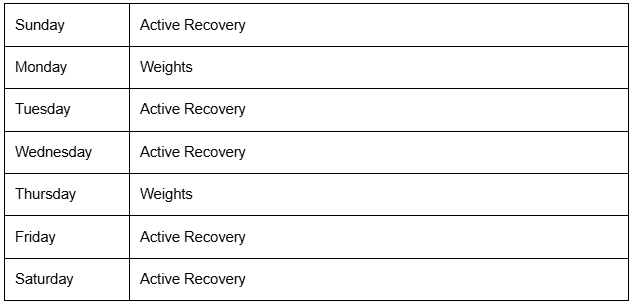
Strength Training Three Days/Week:
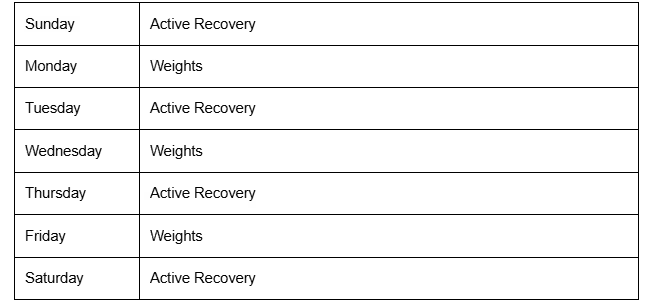
Strength Training Four Days/Week
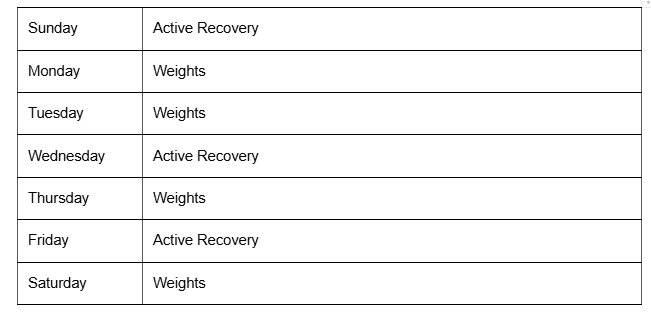
Your first thought might be, “Where are the off-days?” When done correctly, active recovery should feel like a rest day compared to your regular training. Seeing "active recovery" on your schedule doesn't mean you need to complete a structured workout. The goal is simply to engage in gentle movement to keep your blood flowing and support muscle recovery without additional strain.
Improve Your Flexibility with Our Mobility App Today | Get 7 Days for Free on Any Platform
Pliability offers a fresh take on yoga, tailored for performance-oriented individuals and athletes. Our app features a vast library of high-quality videos designed to:
- Improve flexibility
- Aid recovery
- Reduce pain
- Enhance range of motion
Pliability provides daily-updated custom mobility programs for those interested in optimizing their health and fitness. It also includes a unique body-scanning feature to pinpoint mobility issues. If you're feeling limited by pain or ability to move, Pliability aims to complement your fitness routine and help you move better.
Sign up today for 7 days absolutely for free, on iPhone, iPad, Android, or on our website to improve flexibility, aid recovery, reduce pain, and enhance range of motion with our mobility app.
Related Reading
- Which Magnesium Is Best for Muscle Recovery
- Hot or Cold Bath for Muscle Recovery
- Benefits of Massage Gun
- Foam Roller Benefits
- Chocolate Milk for Muscle Recovery
- How to Speed Up Muscle Strain Recovery in Back
- Causes of Poor Muscle Recovery
- Active Recovery Stretches
- Best Recovery Tools for Runners
- Best Vitamins for Muscle Recovery
- Best Foods for Muscle Recovery
- Workout Recovery Tools
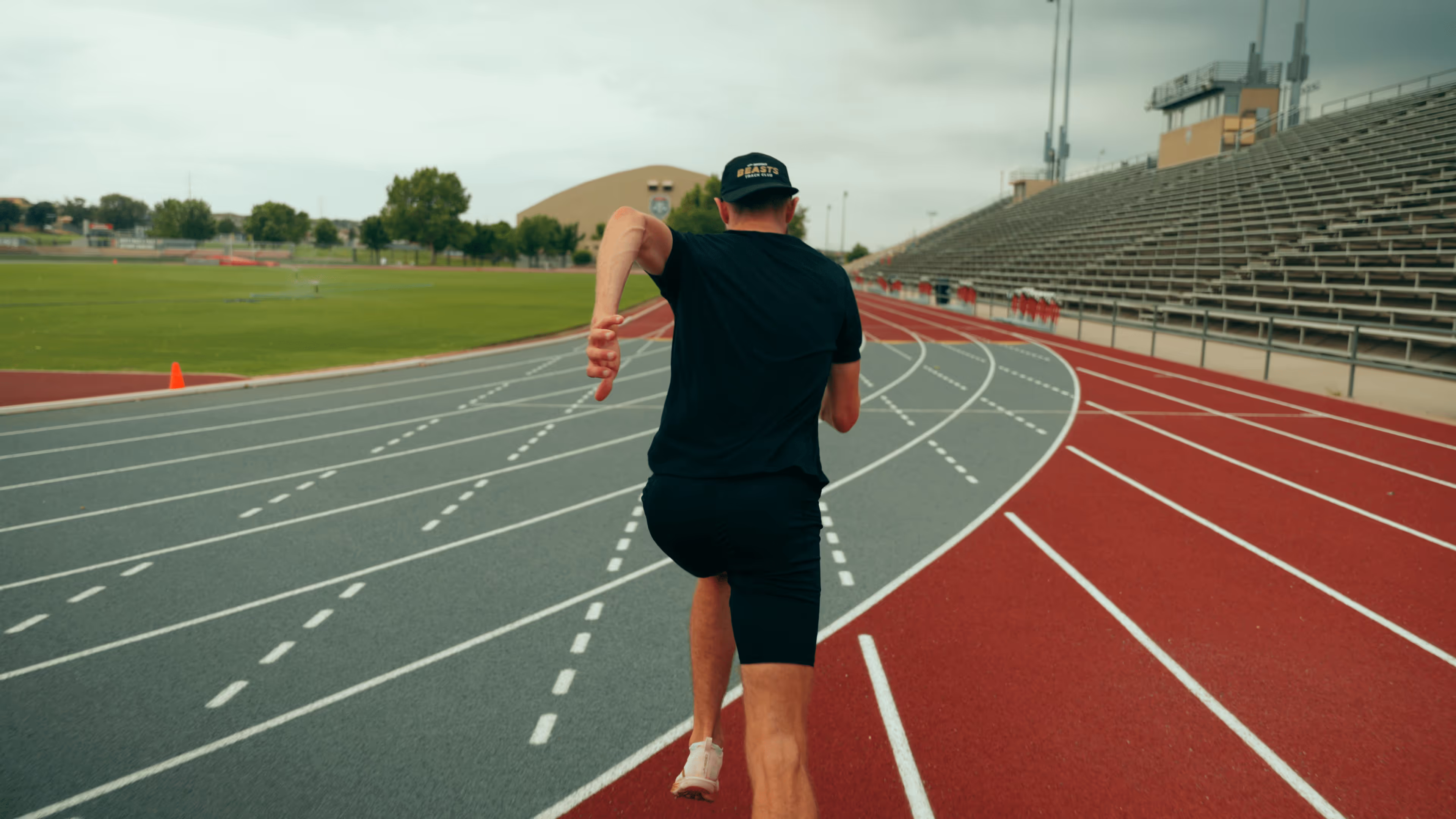
.jpg)

.jpg)
.jpg)
.jpg)
